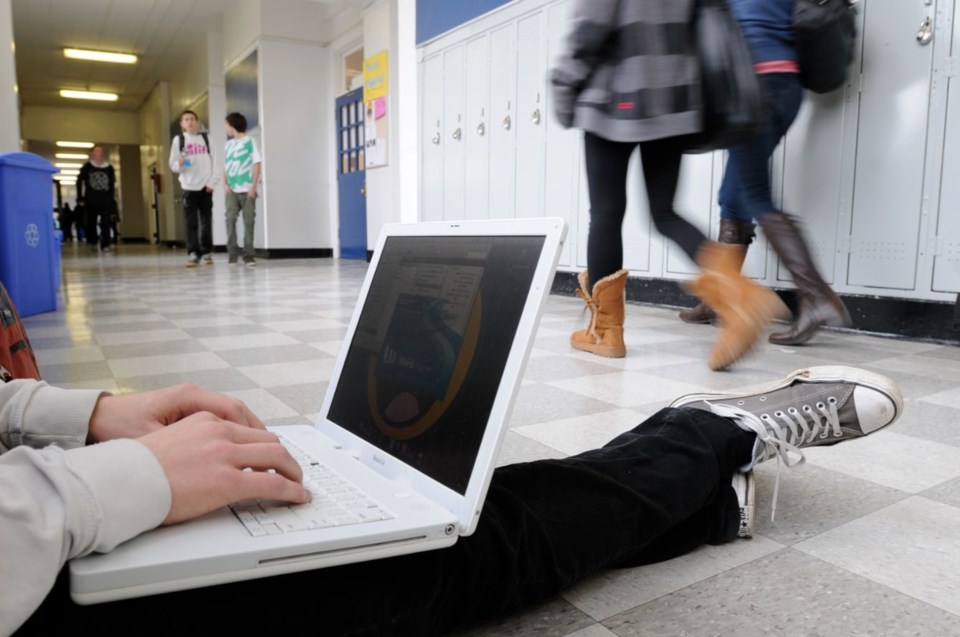For the most part in Canada, school children are given equal opportunities to succeed. But some children — those who are Indigenous, in foster care, disabled or from certain racial groups — are left behind, a from UNICEF says.
The good news is that Canada ranks ninth of 38 rich countries around the world; the bad news is that rising inequality could increase the gap for vulnerable children.
Income inequality is the biggest factor in children’s success at school, with poverty playing a major role, Lisa Wolff, director of policy and research at UNICEF Canada, said in an interview.
“Equity matters because we’re talking about equipping children with a basic level of literacy,” Wolff said. “When young people don’t have basic reading ability, they’re excluded from a lot of opportunity in life and a rich country should be able to at least pull everyone at least up to a basic level.”
Inequality, which is linked to many health and social problems, is highest in B.C. of all Canadian provinces and is growing fastest here, the B.C. Poverty Reduction coalition .
One in 10 school children are not reaching a basic level of reading by age 15, Wolff said.
“Income inequality has a big influence on achievement and on that gap and anything we can do to close levels of inequality that children start out with [will help],” Wolff said.
In Â鶹´«Ă˝Ół»schools, the graduation rate for girls is 95 per cent and 94 per cent for boys. For Indigenous students, it’s just 84 per cent. Only 54 per cent of children in foster care graduate from high school by age 19, the most recent statistics show.
At the same time, and probably related, the B.C. government admits this province has the second-worst rate of poverty in Canada with 12 per cent of the population living in poverty.
The NDP government has promised to bring in the province’s first ever poverty reduction plan by early next year, and they promise it will reduce the overall poverty rate by one-quarter and bring down child poverty by one-half.
“That’s going to have positive effects on learning and on all sorts of areas of life,” Wolff said.
Other strategies that help include social policies, such as the Canada Child Benefit or universal high-quality child care.
“If we started stronger, with more supports for early childhood development and learning, that likely would help to close the gap,” Wolff said.
Last week, the NDP government announced 53 prototype child care projects, funded by the federal government, where parents will only pay $200 a month, per child. This is a significant step in the government’s promise to introduce universal, low-cost child care in B.C., which should help kids get off to a positive start in their education.
The federal government has launched a poverty reduction strategy that includes a national housing strategy, something Wolff said could help.
“Kids can’t learn when they’re in poor, unstable or unsafe housing,” Wolff said.
Making sure students are getting a nutritious meal every day is another must, with one in six children living in families that experience food insecurity, Wolff said. Two-thirds of secondary school students arrive at school without eating breakfast, she said.
“Lack of nutrition contributes to bullying, contributes to drop outs and contributes to kids who are not graduating,” Wolff said.
As many as half of all school children report being bullied either weekly or monthly, which negatively affects their learning, Wolff said.
“Bullying is a big problem in Canada,” Wolff said. “When kids are bullied to that extent… it affects all sorts of their ability to achieve in school.”
The Â鶹´«Ă˝Ół»School Board is working on equity for all students on several fronts. The district has an Aboriginal Enhancement Agreement and the Sexual Orientation and Gender Identity Policy, both of which are designed to ensure inclusion, belonging and recognition of vulnerable learners. Also, school staff consider each student’s needs to provide support, the district said in an email response.
VSB’s strategies appear to be working. B.C. students had the highest rate of reading proficiency found in the UNICEF report card at 92 per cent.
Also good news: the UNICEF report shows the achievement gaps shrink over time, which means the school system is effective in reducing inequality. But it still can do better.
All kids deserve an equal chance for a successful life. Let’s make sure they get one.
Tracy Sherlock writes about education and social issues for the Courier. Reach her atĚý
.
Ěý



